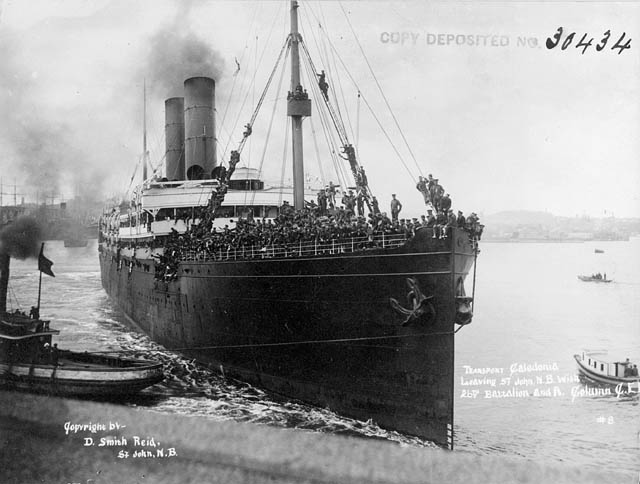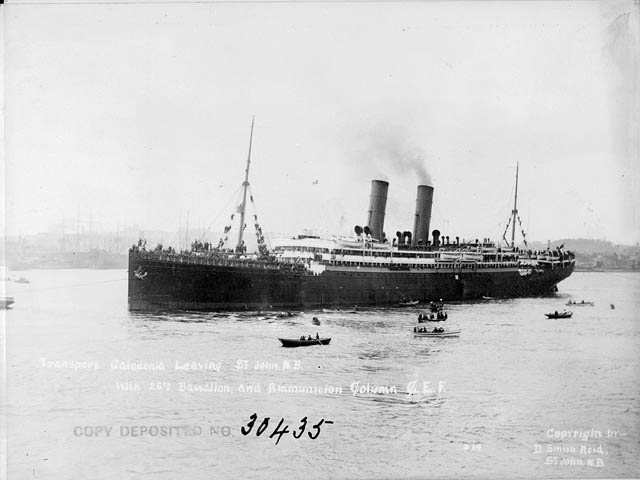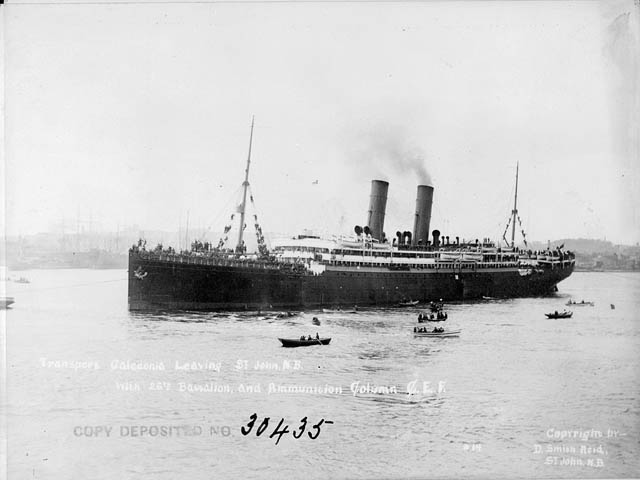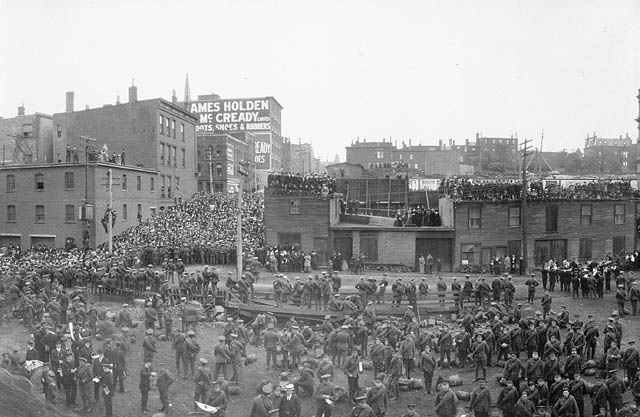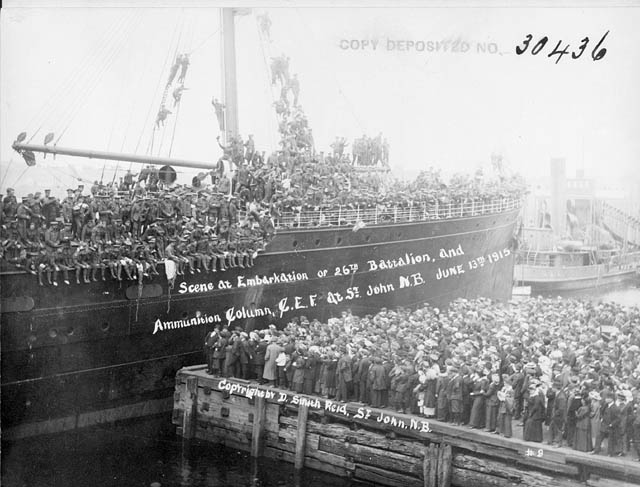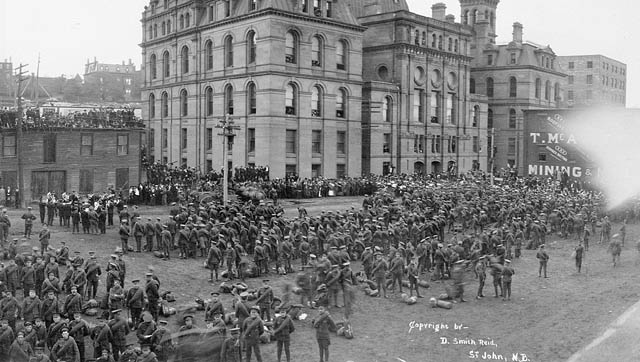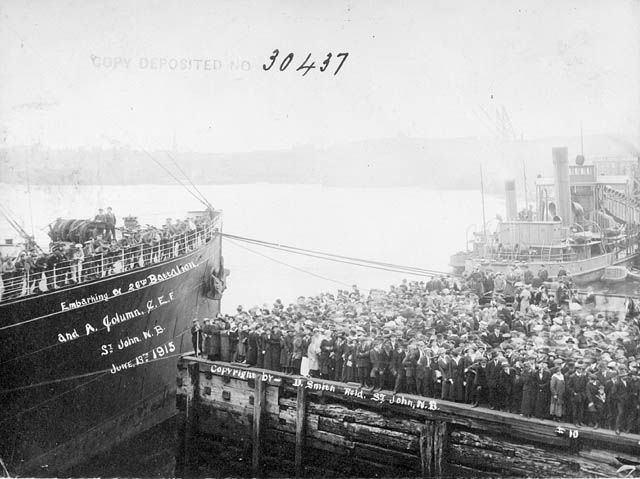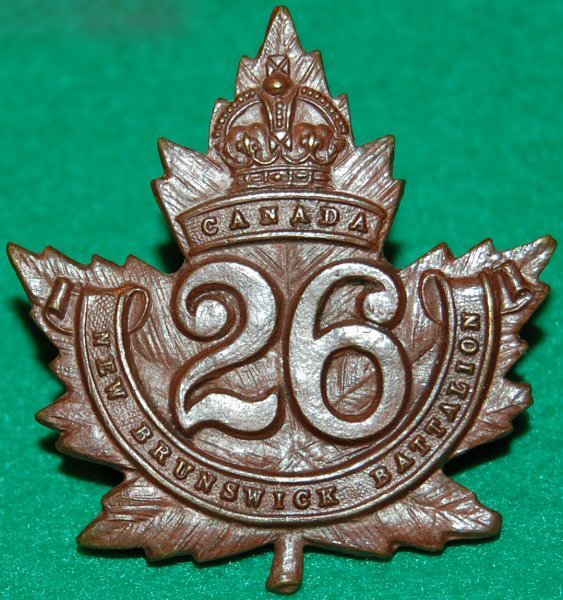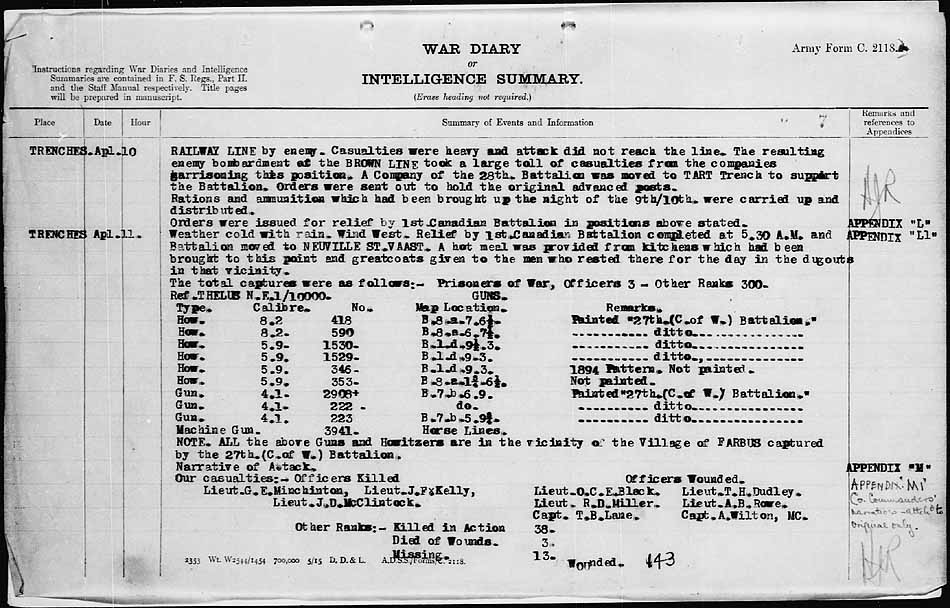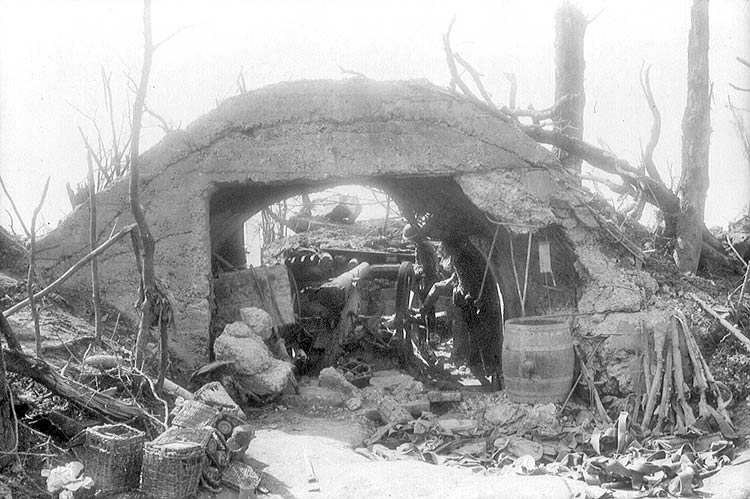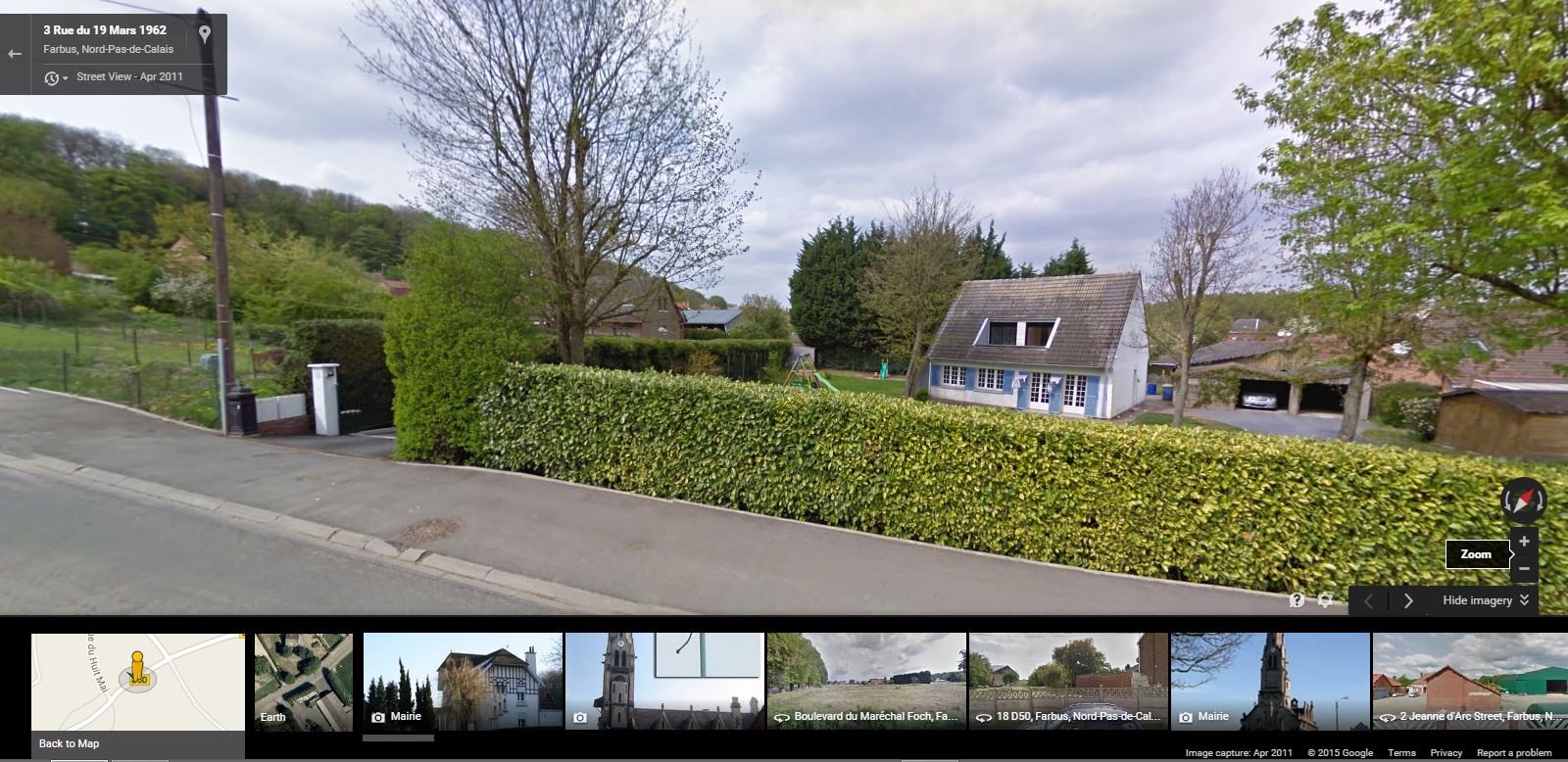This Saturday, June 13, 2015 we're commemorating the Sailing of the 26th New Brunswick Battalion, 100 years to the day they left for the battlefields of Europe on June 13, 1915. On that day 1148 men set sail, comprised of 42 officers and 1106 other ranks, many would not return, and those that did were forever changed.
When the battalion returned home at the end of the war, only 4 officers of the original 42 and 113 of the original 1106 other ranks were still with the battalion, the others being killed, wounded or transferred to other battalions. Over all about 6,000 men served with the 26th Battalion over the course of the war.
It should be noted that the first member of the battalion to die was Lance Corporal George McKee of Fredericton. He died of pneumonia on April 21, 1915 and was buried in the Fredericton Rural Cemetery with full military honours. He was also the first resident of Fredericton to die on active service.
The first member of the battalion to die in action was Private Moses Gallant from PEI. He was killed on September 28, 1915 during the 26th’s first tour in the trenches near Ypres in Belgium. The first officer from the battalion to die in action was Lieutenant Charles M. Lawson, who was a teacher at Saint John High School before the war. On November 26, 1915 he died of his wounds received during a patrol in No Man’s Land.
Lieutenant Colonel A.E.G. McKenzie, the commanding officer of the battalion, was killed in action on August 28, 1918. The battalion losses on that day were 57 men killed and 199 wounded. The worst single day of the war for the 26th was September 15, 1916 when they lost 325 all ranks (killed, wounded and missing) helping to capture the village of Courcelette on the Somme.
The 26th Battalion never lost a battle the entire war.
What follows is a condensed history of the "26th New Brunswick Battalion 1914-1919":
October 25th 1914 Lt. Col. J.L. McAvity received word to recruit a Battalion for the Expeditionary Force to be known as the 26th.
November 1914 Recruiting carried on throughout the Province, Battalion well over strength.
December 1914 Battalion Billeted in Armouries, Saint John.
June 1915 Training carried on intensively.
June 13th, 1915 Battalion Sailed from Saint John on Anchor Line Caledonia.
June 24th, 1915 Landed at Davenport, England, proceeded by train to East Sandling in the Shorncliffe Area.
June to Sept. 13, 1915 Intensive training in England.
Sept. 13th, 1915 Advance Party of Battalion left for France including the Transport.
Sept. 15th, 1915 Battalion marched to Folkstone and embarked landing at Bolougne, France.
Sept. 15 – 18, 1915 Moved toward Firing Line.
Sept. 25th, 1915 Took over Front, East of Kemmel Vierstraat Road from 22nd Batt.
Oct. 13, 1915 Crater Fight Reconnaissance in Force, really one of the first daylight raids, heavy Casualties. Sgt. Ryder received D.C.M., first decoration in 2nd Canadian Division.
Oct. 1915 to Mar. 1916 Holding Line.
March 1916 Took over St. Eloi Front.
April 1916 Lt. Col. J.L. McAvity Invalided to England and command assumed by Lt. Col. A.E.G. MacKenzie.
April – May, 1916 Holding St. Eloi Front.
May 1916 Raid under Lt. Winter who was later decorated with the M.C.
June 3rd, 1916 Heavy German Attack on left of Battalion.
June 6 – 12, 1916 Holding Front prior to and after Counter Attack, heavy casualties.
June 15 to Aug 15 Back on St. Eloi Front, holding line.
Aug. 1916 Out of Line for Reorganization.
Sept. 1916 Move to Somme Area.
Sept. 15th, 1916 Attack on Courcelette, Battalion went in 555 all ranks and came out 174.
Sept. 28th, 1916 Second Tour in Somme, Battalion went in 374 all ranks and came out 78.
Oct. 2 to 9, 1916 Rest and reorganization Bertacourt.
Oct. 9 to 15, 1916 Move by route march north to Bully Grenay Front.
Oct. to Dec. 1916 Holding Line Bully Grenay Front.
Jan. 1917 Raid Enemy Lines for Identification Purposes.
Jan. 1917 Out of Line to Army Reserve for a month at Bruay.
Feb. to Mar. 1917 New Front East of Neuville, St. Vaast. Preperations for Vimy attack.
April 9th, 1917 Attack on Vimy Ridge, Battalion in first place.
April 14th, 1917 Attack East of Vimy Ridge, Battalion established most forward line on British Front which was named New Brunswick Trench.
April to May 1917 Holding Front East of Vimy.
June 1917 Army Reserve in Estree Couche.
July 1st, 1917 Took over New Front East of Lievan towards Lens.
July 1917 Lt. Col. MacKenzie, D.S.O. goes on course to England and command assumed by Lt. Col. W.R. Brown, D.S.O.
Aug. 15th, 1917 Attack from St. Pierre towards Lens, very heavy casualties.
Aug. 20 – Sept. 8 Rest and Refit Maison Bouche.
Sept. – Oct. 1917 Holding Front East of Vimy.
Oct. 1917 Lt. Col. MacKenzie returns and takes command of Battalion, Col. Brown goes to England to command the reserve.
Nov. 1917 Move North to Ypres Salient.
Nov. 6th, 1917 Attack and Capture of Passchendaele.
Nov. 1917 Move back to Vimy Front.
Dec. 1917 Lt. Col. MacKenzie, D.S.O. Invalided to England. Maj. C.G. Porter, D.S.O. assumes command.
Dec. 21st, 1917 Battalion moves to Army Reserve, first Xmas out of Line.
Jan. 1918 Take over Front East of Vimy.
Feb. 1918 Move back to Lens Front.
March 1918 Battalion out for rest and refit, cut short by German Attack South on the 21st.
Mar. 24, 1918 Move South to Bienvilliers Aubois.
Mar. 26th, 1918 Move North again, S.E. of Arras, take over Telegraph Hill Switch.
April 7th, 1918 Lt. Col. A.E.G. MacKenzie, D.S.O. returns to Battalion, Col. Porter assumes duties of 2 I/C.
Apr. – July 1918 Holding Front East of Neuville Vitasse, many raids carried out by the Battalion.
July 1918 Hauteville for rest and refit.
Aug. 1918 Moves to Amiens.
Aug. 8th, 1918 Attack East of Amiens, great depths gained, many prisoners taken.
Aug. 18th, 1918 Moved North to Arras Area.
Aug. 26th, 1918 Attack East of Arras beginning of the end.
Aug. 28th, 1918 Lt. Col. MacKenzie Killed, leading attack.
Sept., Oct. to Nov. 11th, 1918 Continue attacks towards Cambrai Valenciennes, with Battalion at Wancourt when Armistice Declared.
Nov. 15th, 1918 Detail from Battalion in Official Entry into Mons.
Nov. 20th, 1918 Start March to Germany with Army of Occupation.
Dec. 3rd, 1918 Cross Rhine at Bonn Dursen, Inspected by Gen. Currie at the Bridge.
Jan. 1919 Germany East of Bonn, move back to Tamines in Belgium.
Mar., April 1919 Tamines moved back to England.
May 10th, 1919 Sailed from England on Olympic.
May 17th, 1919 Landed in Halifax, Moved by train to Saint John, great reception.
May 17th, 19th, 1919 Demobilization.
This Saturday, we are honouring the men of the 26th Battalion with a Colour Parade, on June 12, 1915 in front of cheering crowds in excess of 20,000 people, the 26th Battalion marched from the Armoury in Saint John to the Harbour. In the early morning hours on June 13, 1915, the 26th Battalion boarded the troop ship, “Caledonia” and sailed for England.
In commemoration of this historic event, the Royal New Brunswick Regiment will parade in full dress uniforms, along with the RCMP Pipes and Drums Band and local cadet groups (the 560 Moncton Army Cadets). The parade will be inspected by Brigadier General Peter Atkinson (retired). BGen. Atkinson served with the Canadian Forces for over 35 years, and still has strong ties to Albert County. This parade has special meaning for the Royal New Brunswick Regiment for they are the living embodiment of the 26th Battalion and hold their battle honours, which are extensive.
Come out and help us remember the Fighting 26th!
To View the Event Click Here.

